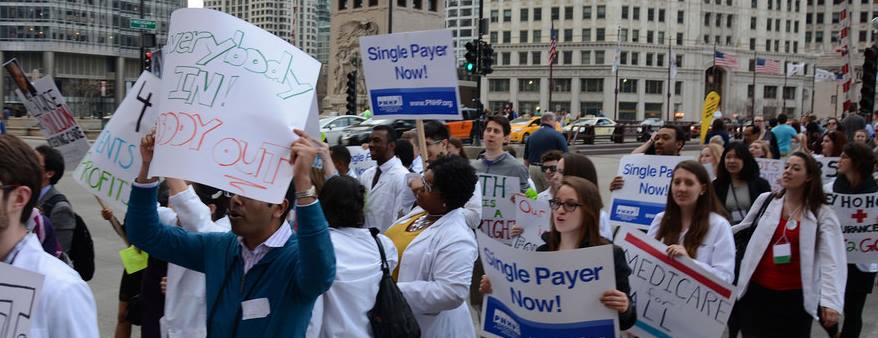The Great Cost Shift: Why Middle-Class Workers Do Not Feel the Health Care Spending Slowdown
By Topher Spiro, Maura Calsyn, Meghan O’Toole
Center for American Progress, March 3, 2015
In recent years, the growth in overall health care costs has slowed dramatically. But for millions of Americans with employer-sponsored insurance, or ESI, this slowdown is illusory. From 2008 through 2013, the average annual growth rate of employees’ monthly premium contributions and out-of-pocket expenses, adjusted for inflation, was more than double that of average annual growth in real per-capita national health care spending, which was less than 2 percent per year. This growth has also outpaced employers’ costs of offering these benefits by more than 40 percent.
Employees experiencing higher health care costs tend to blame the Affordable Care Act, or ACA, even though the law largely leaves the employer-based system alone. In fact, many employers report that the ACA has had only a negligible influence on their health care costs.
The actual reason why employee and employer costs are increasing at different rates is because employers have, over time, shifted greater responsibility for health care expenses to their employees through higher deductibles, higher copayments, and higher coinsurance — a practice that began long before the passage of the ACA. Other employers pay smaller shares of their employees’ health care premiums.
To some degree, this long-term cost shifting has contributed to the overall health care slowdown. Increased cost sharing discourages the use of health care — individuals tend to spend less on their health care when they are subjected to higher fees or deductibles — which has lowered overall health care spending. Employees with higher cost sharing are more likely to avoid or delay even beneficial and cost-effective care. Employers, insurers, and public health care programs benefit from these savings, while individual employees with significant health care needs face greater out-of-pocket costs. Employees have increasingly reported that their health care costs are unaffordable. In other words, almost everyone in the health care system is realizing savings, but employees’ costs are rising.
Unlike changes to wages, which are straightforward and transparent, these types of changes to employees’ health benefits can be hard to understand, making cost-shifting efforts difficult for employees to detect.
The Great Cost Shift (full 31 page report can be downloaded at this page): https://www.americanprogress.org/issues/healthcare/report/2015/03/03/105777/the-great-cost-shift/
****
Comment:
By Don McCanne, MD
One of the most important goals of the Affordable Care Act was to preserve the part of our health care financing system that supposedly was working quite well: employer-sponsored insurance. However, in a process that had already begun and has further intensified since the beginning of ACA implementation, the coverage for employees has deteriorated, with costs being shifted from the employer to the employee without a commensurate increase in wages, leaving employees considerably worse off – especially those employees with greater health care needs.
This report from the Center for American Progress provides an excellent explanation of the mechanisms of this shift in spending from the employer to the employee. Unfortunately, their neoliberal recommendations for correcting this problem are grossly inadequate. Not only would they leave in place the otherwise highly flawed model of financing health care through a multitude of private health plans, they would merely increase transparency of this shift that has been taking place, while increasing administrative complexity by requiring employers to return half of the savings to the employee, and, yes, they would throw in three free primary care visits per year – big deal!
This problem is serious and requires truly transformative change. Instead of allowing employers to continue to implement their current agenda of introducing further relatively opaque changes that will compound the deterioration of the effectiveness of their health plans, we should terminate these plans and replace them with a far more efficient, equitable, and effective single payer national health program.
A single payer system would end employers’ concerns about excessive increases in health care costs, not to mention relieving them altogether from the need to maintain a health benefit program. Much more importantly, it would ensure truly affordable, reasonably comprehensive health care benefits not only for all of their employees, but for everyone else in the nation as well.

